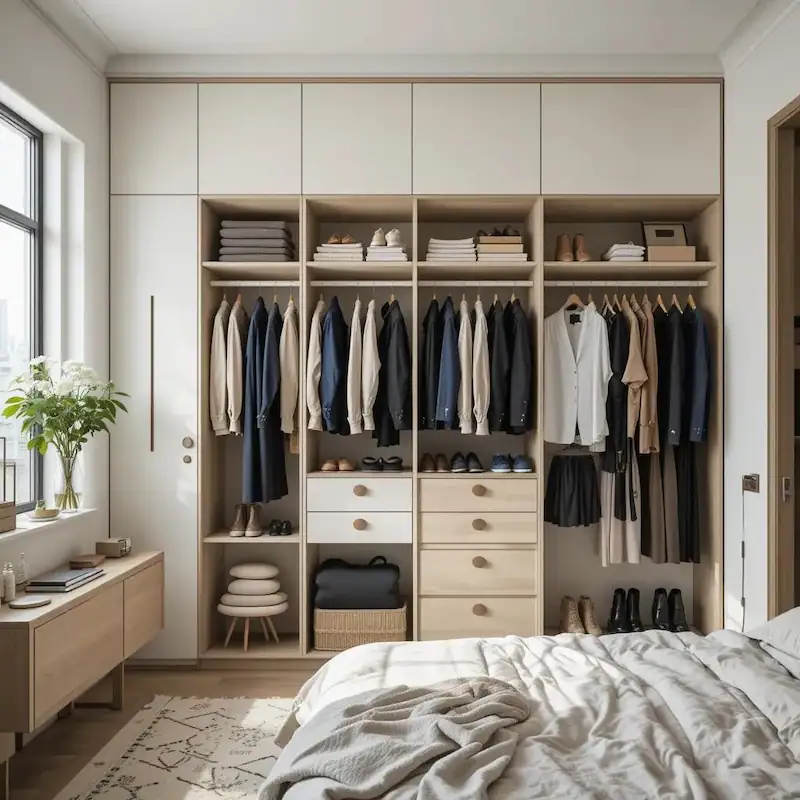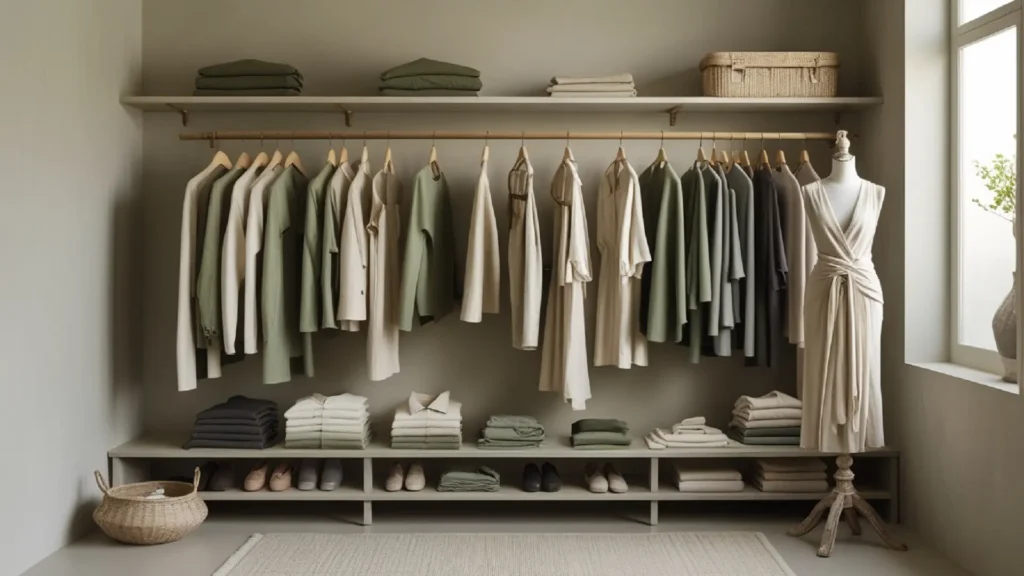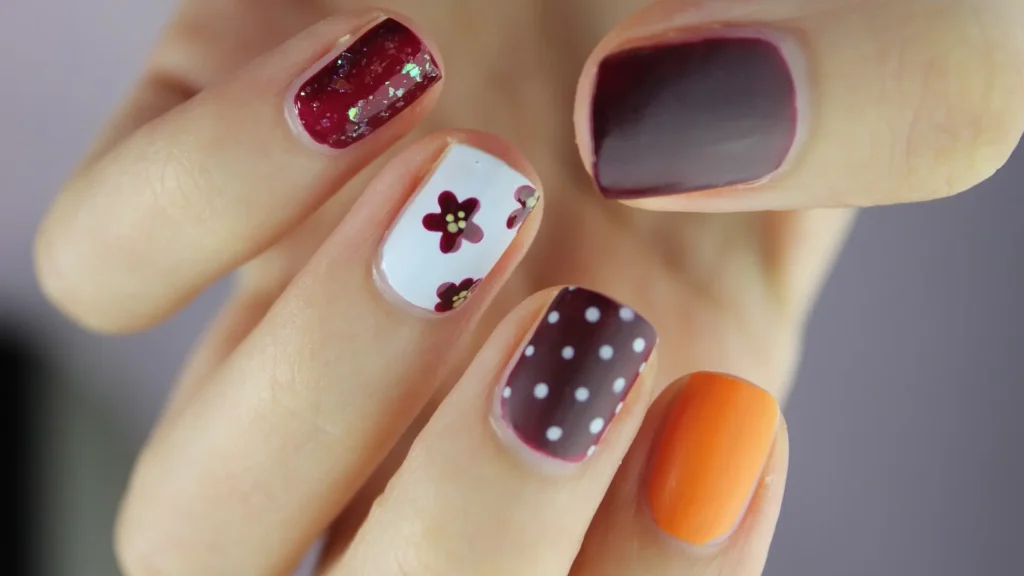Creating a capsule wardrobe is a refreshing approach to curating a closet that is functional, versatile, and timeless. A capsule wardrobe is a collection of carefully selected pieces that can be mixed and matched to create a variety of outfits.
This step-by-step guide will help you build a capsule wardrobe tailored to your lifestyle, style preferences, and budget.
What is a Capsule Wardrobe
A capsule wardrobe is a collection of essential clothing items. It can be mixed and matched to create a wide variety of outfits, with a focus on simplicity, versatility, and quality. The idea behind a capsule wardrobe is to reduce the number of items based on their functionality, and timelessness.
Typically, a capsule wardrobe contains around 30 to 50 pieces, including clothing, shoes, and accessories, depending on your lifestyle and the season.
The goal is to select items that fit your personal style, are versatile enough to work for multiple occasions, and are durable enough to last over time. This minimalist approach not only simplifies decision-making but also encourages mindful shopping. It prevents impulse purchases and reduce clothing waste.
A capsule wardrobe includes:
- Neutral colors: These form the base of your wardrobe and can be easily mixed and matched e.g., black, white, navy, beige.
- Essential pieces: Classic items like well-fitting jeans, blouses, blazers, sweaters, a coat, and comfortable shoes.
- Quality over quantity: Fewer, high-quality items that you truly love and wear often, instead of having a closet filled with items you rarely use.
How to Build a Capsule Wardrobe

Our thinking to fashion has changed significantly over time. The time of influencing with trends have gone and many of us are now adopting a more thoughtful and sustainable ways to purchases. We are now ensuring that nothing in our wardrobe can goes unused. So, we are building capsule wardrobe.
Building a capsule wardrobe involves several thoughtful steps that help you create a functional, minimalist collection of clothing that works for your lifestyle and personal style. Here’s a detailed breakdown of the process:
Assess Your Lifestyle and Needs
Evaluate your daily activities: The first step is to evaluate of your lifestyle. Your capsule wardrobe reflects how and where you spend your time. For example, if you work from home, you may want to prioritize comfy yet stylish loungewear, cozy sweaters, and flexible shoes.
If you work in an office, your capsule may include more structured clothing such as blazers, trousers, and formal shoes.
Consider the climate of your living: What is the weather like in your location? Do you need more heavy-duty outerwear for winter or lighter, breathable fabrics for hot weather?
Make sure to account for the range of temperatures and adjust your clothing accordingly. You need more warm clothing, if you live near the poles.
Assess frequency of your social activities: Do you attend a lot of formal events, or are you mostly focused on casual outings, fitness activities, or outdoor adventures? These factors will impact your choice of clothes.
For instance, someone who does a lot of hiking will want durable activewear, while someone who enjoys social gatherings might prioritize more formal pieces. Athleisure and sportswear is preferable if you spend a lot of time in sports ground with teams.
Choose a color paletter
Base with neutrals: Neutrals like black, white, gray, navy, camel, and beige are versatile and timeless. They work well together and can be paired with almost any color.
For example, Pair white denim with a chunky open knit topped with a cream silky scarf. A black dress can be dressed up for a night out or worn casually with sneakers for the daytime.
Mixing and matching fabrics create interest instantly. Neutral colors help make it easier to mix and match your pieces.
Add accent colors: Choose a few accent colors that complement your neutrals. These could be bold tones like emerald green, mustard yellow, or rich burgundy, or softer tones like blush pink, powder blue, or lavender.
Items like a white blouse, black pants, or a gray blazer can be paired easily with various accent colors.
They should appear in smaller quantities in your outfit, like in accessories (scarves, jewelry, shoes, bags), or as highlights in prints or patterns. For example, a red belt or a yellow handbag can add a pop of color without overwhelming the outfit.
Accent colors bring life to your wardrobe, but don’t overdo it. Aim for no more than three accent colors to maintain a cohesive look.
Consider seasonal variations: Preference of color palette changes with the seasons. For example, during colder months, gravitate toward deeper, warmer tones like dark greens, reds, burgundy, while in spring and summer, lighter and brighter colors like pastels, whites, light blues feel more fitting.

Select the Number of Pieces You Need
Realize how much you need: Capsule wardrobes typically consist of 30-50 items, but you can adjust this based on your needs. Start small, and gradually build it up as you figure out what works for you. Keep in mind that the number of pieces should include all clothing, shoes, and accessories.
Here’s a more detailed breakdown of typical items in a capsule wardrobe:
Category | Item | Quantity |
Tops (8-12 pieces) | Basic T-shirts (Neutral colors: white, black, gray) | 2-4 |
Blouses/Shirts (Button-down shirts, blouses, versatile) | 2-4 | |
Sweaters (Lighter and heavier options depending on climate) | 2-3 | |
Dressy Tops (For special occasions or dressing up) | 1-2 | |
Bottoms (4-6 pieces) | Jeans (Dark pair for formal looks, lighter pair for casual) | 2 |
Trousers or Work Pants (Neutral-colored, tailored) | 1-2 | |
Skirts (Pencil skirt or A-line skirt) | 1-2 | |
Casual Pants/Shorts (Comfortable options for off-duty days) | 1-2 | |
Outerwear (2-3 pieces) | Blazer (Neutral-colored, works for work and casual) | 1 |
Jacket or Coat (Versatile jacket or warmer coat for cold weather) | 1-2 | |
Cardigans (Lightweight, versatile for multiple settings) | 1 | |
Dresses (2-3 pieces) | Casual Dress (Simple, can be dressed up or down) | 1 |
Formal Dress (Versatile for occasions like parties or business) | 1 | |
LBD (Little Black Dress, timeless piece for various occasions) | 1 | |
Shoes (3-5 pairs) | Comfortable Flats or Sneakers (Casual, everyday option) | 1 |
Heels or Dress Shoes (For dressier occasions) | 1 | |
Boots (Versatile, depending on climate and lifestyle) | 1 | |
Casual Shoes (Sandals or slip-ons, depending on needs) | 1 | |
Accessories (5-10 pieces) | Bags (Neutral handbag for every day, smaller dressy option for special occasions) | 1-2 |
Scarves (For layering and adding color or warmth) | 1-2 | |
Jewelry (Minimalistic pieces: stud earrings, watch, statement necklace or bracelet) | 2-4 | |
Belts (Neutral-colored to complement outfits) | 1 | |
Activewear (2-3 pieces) | Athletic Tops (For workout or casual wear) | 1-2 |
Athletic Bottoms (Leggings or sports shorts) | 1 | |
Loungewear and Sleepwear (2-3 pieces) | Pajamas (Comfortable options for sleep) | 1-2 |
Lounge Clothes (Relaxed clothes for weekends or home) | 1 |
Balance seasonal capsules: People work in different ways. Some create two capsules per year, one for summer and one for winter, while others rotate items in and out of their wardrobe.
Be mindful of your lifestyle: Your wardrobe is the reflection your lifestyle. So, think about the types of clothing that suit your day-to-day activities. If you rarely wear skirts or dresses, there’s no need to include them in your capsule.
Focus on the items you’ll wear most frequently.
Build Around Versatile Essentials
Tops: Essential tops are the foundation of your wardrobe. Start with a few high-quality basics like simple t-shirts in neutral colors, a classic button-down shirt, and a cozy sweater.
Layering pieces like cardigans or blazers also help elevate the versatility of your capsule. You might also want to include a special top, such as silky blouse, for occasions when you want to dress up.
Bottoms: A pair of perfectly fitted jeans should be at the top of your list. Consider trousers in neutral shades, and add skirts or shorts depending on the season.
Make sure the cuts and fabrics you choose work for various occasions — for instance, straight-leg jeans, wide-leg trousers, and pencil skirts.
Outerwear: Outerwear is the most expensive category. So, choose items in this category wisely, and avoid if you don’t need or needed occasionally. Make sure they can be worn for multiple seasons.
A well-fitting, timeless coat, trench, or blazer can be worn over various outfits. You may want a lighter jacket for warmer months and a heavier one for colder months.
Dresses: A versatile, simple dress in a neutral color can be dressed up with heels for formal occasions or paired with sneakers for a casual look. Consider one for work and one for more casual wear or evening outings.
Shoes: Choose footwear to fulfill different purposes, and that suits your lifestyle and works well with multiple outfits. A pair of comfortable sneakers, a classic pair of black or nude flats, a pair of stylish boots, and some elegant heels are all good staples.
You may also want sandals, ankle boots, or loafers depending on the season.
Accessories: Accessories help transform a simple outfit. Invest in a few quality pieces like a structured bag, a scarf, a classic watch, and versatile jewelry. Choose earrings, necklaces, and rings to match your overall outlook. Accessories can change the entire look of an outfit without requiring additional clothing pieces.

Mix and Match
Create outfits: Once you’ve chosen your clothing, focus on creating multiple combinations from the pieces. The goal is to make sure that each piece can pair well with others.
A top should go with a few different bottoms, shoes, and accessories. For example, a white blouse can be worn with jeans for a casual look or paired with trousers for a more formal look.
Plan outfits for different occasions: Be sure you have options for work, casual days, social events, and other activities. Think about the pieces that will work for day-to-night transitions or dressy-casual outfits.
Creating a mix-and-match strategy for your capsule wardrobe is all about versatility and maximizing the potential of each piece. The goal is to build outfits that can be adapted for different occasions, using a limited number of items. Here’s a set of sample combinations using the essential pieces in a capsule wardrobe:
Casual Day Look
Top: Basic white T-shirt
Bottom: Dark jeans
Outerwear: Denim jacket
Shoes: White sneakers
Accessories: Minimalist watch, crossbody bag
Business Casual
Top: Blouse (light gray or striped)
Bottom: Black trousers
Outerwear: Blazer (neutral-colored, black or navy)
Shoes: Comfortable flats or loafers
Accessories: Simple necklace, tote bag
Evening Out
Top: Dressy black top (silk or satin)
Bottom: Black trousers (or pencil skirt)
Outerwear: Blazer or a chic cardigan
Shoes: Heels (black or nude)
Accessories: Statement earrings, clutch bag
Travel-Ready
Top: Basic T-shirt (white or black)
Bottom: Comfortable leggings or casual pants
Outerwear: Lightweight jacket or cardigan
Shoes: Sneakers
Accessories: Crossbody bag, scarf
Experiment proportions and textures: To keep things interesting, experiment with different silhouettes and textures. A slim-fit turtleneck can pair well with a looser pair of jeans, or a structured blazer can complement a flowy dress.
Playing with textures, like pairing a chunky knit sweater with sleek leather pants, can make outfits look more dynamic.
Declutter Your Existing Closet
Sort through every item: Go through your entire closet and pull out anything that doesn’t fit, is damaged, or no longer reflects your style. Try on everything to see how it feels and whether you truly like it. Be honest with yourself—if you haven’t worn it in the last year or it no longer suits your lifestyle, it’s time to let it go.
Organize by category: Create separate piles or sections for pieces you want to keep, donate, or sell. Items that are in good condition but no longer fit your style or size can be donated to charities or sold through second-hand stores or online marketplaces.
Here’s a list of items to consider when decluttering your wardrobe, along with categories and reasons for letting them go.
Category | Item | Where to Put It |
Clothing | Clothes that no longer fit | Donate or Sell |
Clothes with stains or damage | Recycle or Dispose | |
Clothes that are out of style | Donate or Sell | |
Duplicate items (e.g., same color T-shirts) | Donate or Sell | |
Clothes from impulse buys | Donate or Sell | |
Shoes | Shoes that are uncomfortable | Donate or Sell |
Worn-out or damaged shoes | Recycle or Dispose | |
Shoes that don’t fit | Donate or Sell | |
Accessories | Outdated jewelry | Donate or Sell |
Broken accessories (bags, belts) | Recycle or Dispose | |
Excess scarves or hats | Donate or Sell | |
Outerwear | Jackets or coats you don’t wear | Donate or Sell |
Excess coats or jackets | Donate or Sell | |
Activewear | Old, stretched-out leggings or workout gear | Recycle or Dispose |
Unused sports equipment or shoes | Donate or Sell | |
Sleepwear/Loungewear | Worn-out pajamas | Recycle or Dispose |
Loungewear that doesn’t fit | Donate or Sell | |
Miscellaneous | Clothes you’ve never worn | Donate or Sell |
Seasonal items you never wear | Store (if needed) or Donate | |
Bags and Purses | Old, worn bags | Recycle or Dispose |
Bags that no longer match your style | Donate or Sell |
Minimize impulse purchases: Going forward, be more deliberate with your purchases. Aim for quality pieces that complement your capsule, rather than buying trend-based items that might only be worn once or twice. To reduce impulsive buying, you can do the followings-
- Define a spending limit for non-essential items and stick to it.
- Only buy what’s on your list, and avoid adding unnecessary items.
- Use the “24-hour rule” to evaluate if you truly need the item.
- Regularly review your purchases to stay accountable.
- Don’t shop when stressed or bored; find other ways to cope.
- Buy long-lasting, versatile items that fit your lifestyle.
- Pay with cash to create awareness of your spending.
- Save up for larger purchases instead of buying immediately.
- For each new purchase, get rid of something you already own.
Focus on Quality Over Quantity
Invest in lasting pieces: Since you’ll be keeping your wardrobe minimal, it’s worth investing in higher-quality clothing that will stand the test of time. Look for well-made fabrics like cotton, wool, linen, and silk, which tend to last longer than synthetic fabrics.
Quality construction like reinforced stitching and durable zippers also ensures that your clothes will last.
Consider sustainability: Choose pieces from ethical brands that prioritize sustainable practices. Prioritize eco-friendly materials. Supporting such brands not only helps the environment but can also ensure that your clothing was produced responsibly.
Avoid fast fashion: Fast fashion is comparatively cheaper but uses low-quality materials that wear out quickly. Prioritize pieces that may cost a bit more upfront but will provide better value over time.
Maintain and Reassess Regularly
Seasonal updates: At the beginning of each season, go through your wardrobe and assess your wardrobe. Swap out heavier winter clothing for lighter pieces in the spring and summer, or add layers for cooler weather. Make sure you’re still happy with each piece and that it still works with your lifestyle.
Keep track of items: To build a proper capsule closet, consider removing unnecessary items from your capsule. Likewise, if you find yourself consistently missing something, make a note to buy it.
Stay flexible: Your wardrobe doesn’t need to stay the same forever. If your style or lifestyle shifts, feel free to adjust your capsule. A wardrobe should reflect your current needs, not the past.
Create a Shopping List for Gaps
Analyze what’s missing: After decluttering and organizing, review your capsule wardrobe and look for gaps. Do you have enough layering pieces, or is there a pair of shoes that could complement multiple outfits? Perhaps you need a basic cardigan, or you’ve realized you could use a special occasion dress.
Shop mindfully: When you do make purchases, ensure they align with your overall capsule. Focus on timeless, multipurpose items that will enhance your overall collection.
Be Adaptable
Adapt to changing needs: Your capsule wardrobe should be flexible to fit changes in your life. If you start a new job, take up a new hobby, or move to a different climate, you may need to adjust your wardrobe. Be open to evolving it over time to reflect your current situation.
Experiment trends with your true style: You don’t have to abandon trends entirely, but if you do include trendy pieces, keep them in balance with timeless essentials. This allows you to stay current without compromising the longevity of your capsule wardrobe.
By following these expanded steps, you’ll have a capsule wardrobe that truly fits your lifestyle, aesthetic, and needs, helping you feel more organized, stylish, and confident in your clothing choices.




